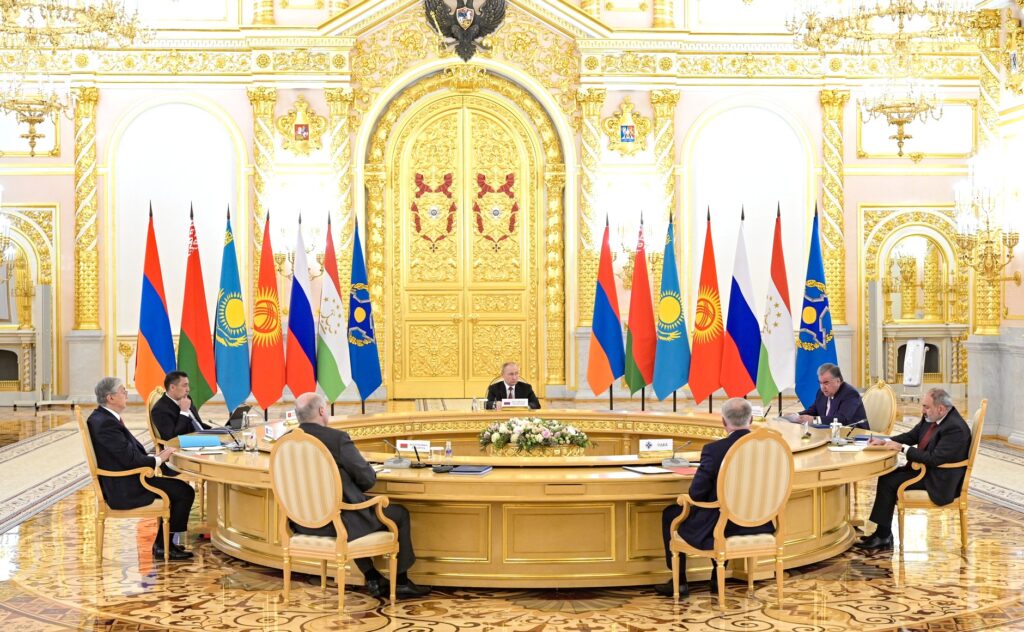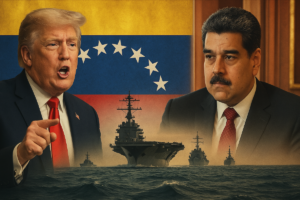- The CSTO, led by Russia, was created to ensure security among the former Soviet republics, imitating the structure and objectives of NATO;
- Armenia’s withdrawal from the CSTO highlights the structural problems and internal tensions within the alliance;
- Kazakhstan has expressed concern that future actions by Russia, as have other members, could result in the weakening and even the end of the CSTO.
The Collective Security Treaty Organization, often called “NATO of the Former Soviet Countries”, was created to ensure collective security among the former Soviet republics. Led by Russia, the CSTO aimed to replicate NATO’s structure, but focused on mutual protection and military cooperation against external and internal threats.
However, the alliance has faced increasing challenges that recently culminated in Armenia’s withdrawal. This decision by Armenia not only reduces the number of members, but also exposes structural problems and internal tensions that threaten the effectiveness and unity of the organization.

What is the CSTO and Why Did Armenia Leave the Alliance?
The CSTO began to formally operate in 2002, with the objective of protection and military cooperation against internal and external threats. At the beginning, the alliance included nine countries: Russia, Armenia, Belarus, Kazakhstan, Kyrgyzstan, Tajikistan, Uzbekistan, Azerbaijan and Georgia, all former Soviet Republics. However, Azerbaijan, Georgia and Uzbekistan have left over the years, reducing the number of active members.
In the case of Armenia’s recent withdrawal, it can largely be explained by Yerevan’s frustration with its lack of support during the Nagorno-Karabakh conflict.
In 2021, Armenia requested help from the CSTO against Azerbaijan, but the organization refused, arguing that the conflict did not occur within Armenian borders, but rather in Nagorno-Karabakh, a region that was disputed between the two countries but internationally recognized as belonging to Baku. Armenia saw this response as a betrayal, as it expected more support from its allies, particularly Russia.
After feeling vulnerable and isolated within the CSTO, Armenia began seeking new partners. As previously stated, Russia’s lack of support during the Nagorno-Karabakh war shook Armenia’s confidence in the alliance. Russia, traditionally seen as the leader of the CSTO, chose not to intervene directly, which was interpreted as a sign that Armenia’s interests were not a priority for Moscow.
Disappointed, Armenia approached the United States and France, who offered significant support to the country. France, for example, took the opportunity to strengthen its ties with Armenia, partly in retaliation against Russia for its actions in the region of Africa known as FrançAfrique.
This geopolitical shift demonstrates an initial repositioning of Armenia from the Russian sphere of influence to the more western zone of influence.
Why Has the CSTO Been Weakened in Recent Years?
The CSTO has seen its alliance decline with the departure of some members due to a lack of effective response to crises and the Russian invasion of Ukraine. The war in Ukraine, for example, has increased fear among countries close to Russia, who fear they will be Russia’s next targets.
For example, Kazakhstan is concerned about possible future actions by Russia, especially after the CSTO’s limited intervention in the January 2022 protests.
In January 2022, Kazakhstan faced large protests driven by rising fuel prices, which quickly turned into a broader anti-government movement. Kazakh President Kassym-Jomart Tokayev requested the CSTO’s help in restoring order. The CSTO responded quickly, sending troops to help stabilize the situation.
Despite the suddenness of the intervention, many observers and members of the Kazakh government perceived the action as a means of protecting Russian interests in the region rather than providing genuine support to the local government. The intervention was seen as limited, both in terms of troop numbers and duration, raising doubts about the CSTO’s willingness to provide full assistance in times of crisis.
Furthermore, the Russian military presence was perceived as a reminder of Moscow’s influence, raising concerns that Russia could use the CSTO as a tool to intervene in member countries’ internal affairs under the guise of maintaining stability.
It is important to highlight that the Baikonur region in Kazakhstan is controlled by Russia. In 2005, Kazakhstan reached an agreement with Russia, extending the region’s lease for Moscow to use and manage until 2050.
Baikonur is important because it is the only launch base for Russian rockets to the International Space Station. The “Baikonur Cosmodrome” would be for Russia what the Cape Canaveral Space Center in Florida is for the USA. For example, a visit to the site must be authorized by the Russian state-owned company Roscosmos.
The constant Russian military presence in this region of Baikonur causes great discomfort to Kazakhstan, especially in the face of Moscow’s imperialist stance in the war in Ukraine. Baku is afraid that Baikonur could one day become a kind of Russian Trojan Horse.
This situation caused CSTO members to begin viewing the alliance as an unreliable defense mechanism, due to Putin’s leadership and the growing fear that they would be the next countries to be invaded.
Another problem is Russia and Belarus’ arms deals with Azerbaijan.
In 2022, Putin made an arms deal with Azerbaijan, considered a betrayal by Armenia, which until then had been a staunch ally of Russia. That deal included the sale of advanced military technologies to Azerbaijan, which was already at war with Armenia over Nagorno-Karabakh.
Belarus, also a member of the CSTO, participated in the agreement and played a crucial role in supplying weapons and military equipment to Azerbaijan between 2018 and 2022. This move was seen as a major breach of trust by Yerevan, as Belarus modernized artillery and supplied drone systems used against Armenia.
This move by Moscow and Minsk has raised further doubts about the CSTO’s priorities and its loyalty to its member allies such as Armenia. Militarily strengthening a direct adversary of Armenia caused other members of the alliance to also begin to doubt the reliability of the CSTO as a security alliance.
What Are the Future Prospects of the CSTO?
The future of the CSTO appears uncertain and increasingly weak. Armenia’s departure not only decreases the number of members, but also shows the growing distrust between the alliance countries and Russia’s dominant influence. If CSTO members were not afraid of an imperialist Russia, the organization might have a chance to reform and strengthen itself.
For the CSTO to survive and prosper, the alliance would need to address its members’ concerns and adapt to new political and security realities. Russia’s dominance and lack of trust between countries weakens the alliance’s cohesion and effectiveness. The inability to offer support at critical moments makes the organization even weaker.
If the CSTO continues to weaken, its members may seek new alliances and partnerships that offer greater security and support, whether with the West, Turkey, or China, leading to the weakening of Russian influence among many of the former Soviet Republics. In this way, Armenia’s departure could be a signal to other member countries to reconsider their alliances and explore alternatives outside the Russian sphere of influence.





Be First to Comment